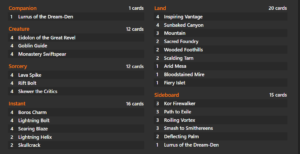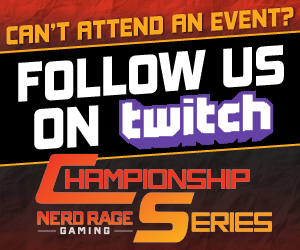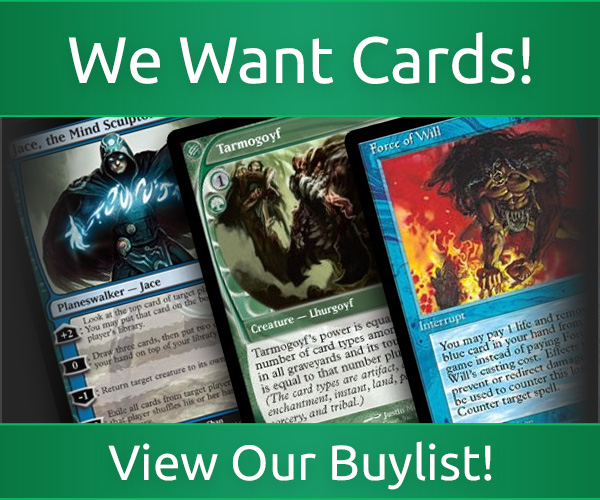Burn is Easy
Last weekend, I piloted Burn to an 8-0-1 record for a first seed finish at SCGCon’s Modern 10k in Philly. I did this with very little sleep and zero preparation, so much that I did not want to play against hammer as I had not (and still have not,) played the matchup. I have about eight years of competitive experience with the deck, but I expected to scrub out due to my lack of knowledge of the current format. I was mostly there for the legacy format, which, of course, went 1-2 drop. I was utterly in shock all day that I kept winning and was wondering how I just kept winning. Of course, luck is always a factor, and any player will tell you that you don’t Top8 without some luck. The reason I mention my lack of preparation isn’t just to flex, as this situation got me thinking: is burn just an easy deck to pilot?
What do you think they would say if you were to ask a room full of modern players what archetype burn is? According to online decklist websites, Burn is listed as an “aggro” deck, usually trying to end the game swiftly by abusing cheap threats and making the opponent struggle to keep up. While there are some matchups where you put the pedal to the metal, I do not see Burn as an aggro deck. Burn is a critical mass deck where you need a certain amount of damage to win the game. For example, I mulligan as little as possible as sheer card volume is very important. I’ll keep almost any hand that has two-four lands. Although other combo decks mulligan more aggressively to be conducive to faster wins, the principle of critical mass is akin to storm. I do not think anyone would argue that storm is not a combo deck. Therefore, since the principles are similar, I view burn as mostly a combined control deck and combo deck.
You may be laughing at the thought of Burn as a control deck. I will admit combo is a much easier sell than control. However, I often play Burn like a control deck, especially post-board. Burn has a large amount of targeted Burn, which deals three damage. Due to modern’s nature, there are many cheap threats with toughness of three or less. This makes Burn playable as a deck with roughly 18 removal spells which is more than most control lists play. Although stereotypical control also plays counterspells and other forms of interaction, burn spells functioning as removal allows the deck to do a decent control imitation. With the addition of Lurrus, playing the control game was made even easier. If we have extra mana and are waiting to combo, we can add Lurrus. Then, when it is time to “turn the corner,” we can play Lurrus and bring back a hasty threat, giving our opponent two creatures they have to answer at once. Considering most of the threats in modern are creatures that can be answered with a bolt and our lightning-quick finishing speed, playing Burn as a control deck is a viable strategy in various matchups.
The best example of the control/combo dynamic is a matchup I played twice in swiss, Grixis Death’s Shadow. Most of their creatures, Ragavan and Dragon’s Rage Channeler, can be killed easily with one of our many bolts, which leaves their main viable threat to be the deck’s namesake, Death’s Shadow. Since they cannot even play this card without getting to a lower life total, we can take a controlling position, killing any threat they play while amassing a stockpile of burn spells in our hand. I even go as far as bolting Death’s Shadows if they are small enough and can’t get bigger on demand. Furthermore, I will stop attacking with my creatures and leave them to block a dashed Ragavan or a large Death’s Shadow later in the game. We are in no rush to end the game in this matchup, so we should let our opponents get themselves low as that is how we extract card advantage.
Once they bring themselves low enough, so Death’s Shadow is out of bolt range (conveniently nine life or three bolts), I can “turn the corner” and combo them out on their end step/my turn. Before they can ever get a fast clock to beat me down, they face a volley of damage before untapping. However, I want to warn you to be careful. Although your count may add up to lethal, a large Death’s Shadow will quickly end the game if you fall short due to interaction. As a rule of thumb, I tell new players that if you need to do the math to “go for it,” just wait. Until your Death’s shadow opponent threatens a Kroxa or an unanswerable, game-ending threat, there is no harm in stockpiling more Burn than you need.
The Death’s Shadow example has one colossal lesson, know your role and know who is the beatdown at every point in the game. Harkening back to the revolutionary article “Who’s the Beatdown?” from 1999, knowing who is favored if the game continues going the way it has been and if the game goes long is vital to burn’s strategy. I see so many new pilots just play out all their spells on curve without thinking if they are beatdown or not. Mana efficiency is not the most important thing when all of your spells are one or two mana. Sending all of your Burn at your opponent’s life total and “counting to 20” is why many skilled Death’s Shadow players believe they have a good Burn matchup, as they can outrace you if you ignore their threats.
Now that we have talked about when to play the control/combo deck, why do many people think of Burn as an aggro deck? There are instances in which you try to assemble the fastest kill possible. For example, against 4-Color “Money Pile,” we have to race against an Omnath coming down and ending the game by gaining eight life off of a single fetch land. However, this still doesn’t mean that you need to aim all your Burn at your opponent’s life total. Is there a creature blocking an attack? It might be worth targeting the creature and clearing a way for your creature to connect, taking resources away from your opponent while still whittling away at their life total. Due to the similarities between the cards Rift Bolt, Lava Spike, Lightning Bolt, Skewer the Critics, and more, Burn is like trying to solve a puzzle box with a hammer, but you still have to know where to hit and how hard.
Even though we are supposed to go fast in this matchup, I still urge Burn players to slow down and think about why they are in a hurry. Some of our burn spells are instants, and we should be playing them as such. If you’re playing against a blink-based deck, should you be holding up a bolt in case they Ephemerate? If you are casting an instant on your main phase, why? Is it worth waiting to see if there is a creature you need to kill? Are you afraid of countermagic? Would it be better to wait until their upkeep or end step to hurt their mana efficiency if they have mana up? Get into the habit of assessing your role every turn and every moment of the game. It will be mentally draining at times, but you will be able to do it as second nature after practice. I was able to do it for 13 hours, even after only four hours of sleep. Not only will this practice help you with Burn, but with all decks, as establishing your role and playing your part is just a fundamental of magic.
You may be thinking, “Jordan, I thought you were saying burn was easy! Here you are talking about counterplay and game theory”. Fine, you got me. Burn isn’t easy. However, it is simplistic. There are very few complex and windy lines where you plan out five turns in advance. There are not many niche rules interactions you should be aware of—no tips and tricks on how to stack your triggers. However, the deck’s plans change at a moment’s notice based on your draws. It is vital to know the situation and how it has changed, especially when playing a red deck with no card selection or deck manipulation.
Overall, I believe that Burn is a simplistic deck that becomes easy once you understand what role you play at all times. The lines are not that complex, but knowing when to deploy them and how to use them makes the difference between wins and losses. I want to close by addressing a concept popularized by my favorite TV show, Avatar: The Last Airbender. There are many different types of Jing in the show, options of how to deploy your energy while fighting. There’s positive, aggressive, negative, evasion, and neutral, jing waiting. I urge you to harness the power of Neutral Jing. See what problems your opponent presents, pick your battles, wait, and strike when the time is right.




